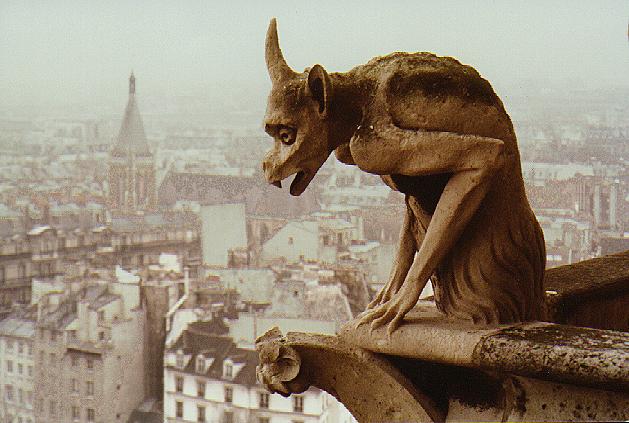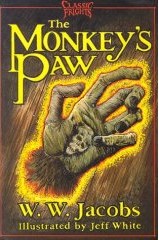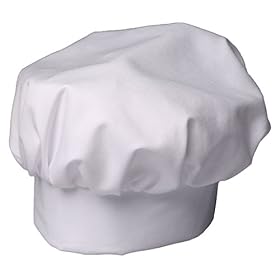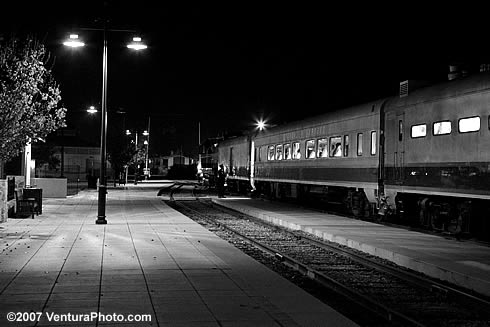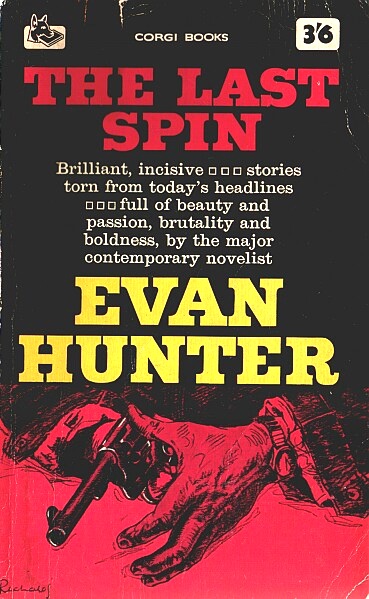 Science could be my second favourite subject this year. Certainly, I really enjoy the subject and have learned heaps in a relatively short space of time. The speed we go at learning things is very fast but the way my teacher teaches allows everyone to understand all the new concepts. Like Social Studies, Science for me is an extension subject this year. Everyone in my class does all the mainstream subjects with me too but we must have been grouped based on our science class because we're all together.We have a lot of fun. I have discovered I love Chemistry, but it is probably Biology I will pursue in the next few years. Taking Year 11 Science in Year 10 gives me the opportunity to fill some of my Year 11 quota of 80 credits (for NCEA) a year early from science tests and suchlike.
Science could be my second favourite subject this year. Certainly, I really enjoy the subject and have learned heaps in a relatively short space of time. The speed we go at learning things is very fast but the way my teacher teaches allows everyone to understand all the new concepts. Like Social Studies, Science for me is an extension subject this year. Everyone in my class does all the mainstream subjects with me too but we must have been grouped based on our science class because we're all together.We have a lot of fun. I have discovered I love Chemistry, but it is probably Biology I will pursue in the next few years. Taking Year 11 Science in Year 10 gives me the opportunity to fill some of my Year 11 quota of 80 credits (for NCEA) a year early from science tests and suchlike.
I have a big heavy Year 11 Science Workbook which I have managed to keep very neat so far. We used it a lot in Chemistry for various exercises, which was our first topic for the year. It started with atomic structure. This made no sense at all last year but is clearer than crystal now! I can compare protons, electrons and neutrons and describe the atomic number, mass number and possible isotope of an element on the Periodic Table Of Elements. I loved it when we worked out electron configuration of an element based upon the number of protons and the element being neutral, all because it made so much sense. Also, when an element loses an electron, or gains one, (or two, or three..) to make the valence stable and to join up with another element, forming an ion, the neutral status of the element tips and it becomes either positively or negatively charged. Ions got a bit confusing but I understand all that now.

Our teacher is good at teaching using different methods. Normally we have discussions or he lectures us all the information we need. One day he brought out mini whiteboards for everybody so we could do a true or false quiz. Everyday we have a quick quiz in the back of our books as a refresher, and quite often we watch Youtube or VCR videos, conduct practical experiments, watch the teacher conduct an experiment or we view some of the BrainPop movies and quizzes. We find BrainPop a good site! http://www.brainpop.com/

Compounds and mixtures were good things to become clear about this year too. We got up to having to balance chemical equations by adding appropriate molecules and evening out numbers of particles, and also had to remember the basic formulae. Metals and oxygen, metals and hydrogen, acids and bases... We learned how to recognize acids and bases, experimented with the Universal Indicator and Litmus papers, and the pH scale. I liked the Universal Indicator, which made our test tubes turn all the colours of the rainbow!

I understood further when we worked with salts. We separated salt from sand and learned that an acid and a base react together to produce salt and water. In the equation we wrote, the latter and first pieces of the base and acid came together to create the salt, and the remainder was H2O! OH is hydroxide and H is hydrogen. They are opposites and H atoms are from acids while OH atoms are from bases; H and OH is what makes H2O!
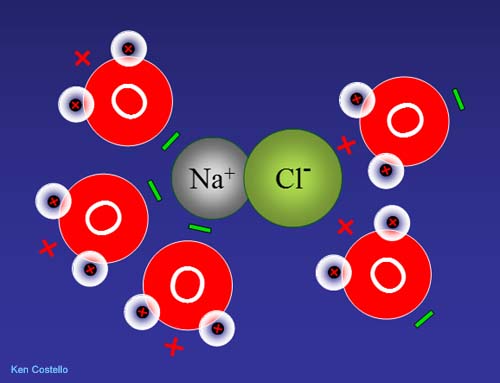
Biology has been a good unit too. The first part was about Micro-organisms. We studied bacteria and how they move, respire, reproduce, sense, grow, excrete and eat, using MRS GREN as a checklist. (Movement, Respiration, Sensitivity, Growth, Reproduction, Excretion, Nutrition.) We applied these life functions to Fungi as well. Through comparing we discovered the similarities and differences between fungi and bacteria.
 The third microbe we looked at were viruses. These are debated over whether they're living or not, but we looked at these parasites all the same. They are excellent at reproducing, but not at the other life functions.
The third microbe we looked at were viruses. These are debated over whether they're living or not, but we looked at these parasites all the same. They are excellent at reproducing, but not at the other life functions.
The second part of Biology was a little more interesting for me, on genetics. There is a wheel we drew in our books with multiple rings, divided in two at the centre, four in the next ring, then 8, and 16 and 32. Specific traits alternated all the way around their ring, and the last ring had numbers 1 to 32 clockwise around. We were able to draw the path out own bodies take and find out how different we were! At the end our teacher called out each number to see who was who. We had four in the same category at most, but nearly everyone was different. I was one of a few people to put my hand up after 16, because I am on the opposite half to may class, being left-handed. This wheel is slightly similar. Click to enlarge!

At the centre I ticked the left semicircle (left-handed) then the fourth quarter in the second ring (I have an attached earlobe.). In the third ring I selected the sixth eighth (with a shorter second toe) and then the thirteenth sixteenth in the fourth ring because I have a double jointed thumb. In the fifth ring I used the twenty-sixth piece because I cannot roll my tongue. That made me Number 26! I was the only 26 in my class :)
DNA, or DeoxyriboNucleic Acid was looked into closely by us. We copied out magnified drawings of DNA and chromosomes, DNA nucleotides, genes and then the little pictures of Adenine, Thymine, Guanine and Cytosine matches. The order of these determines alleles, or 'options' of a specific gene.
A litte further on we watched videos on, and were taught all about Mitosis and Meiosis. We compared the similarities and difference of these two processes.
I can define genotypes and phenotypes, alleles and genes, homozygote and heterozygote pairs and the differences between dominant and recessive genes. All this made up our next bit of work, involving us learning to draw Punnett Squares (to get down options of a gene for offspring based upon genes of two parents) and extracting information from Pedigree Charts to decide which allele of a gene is recessive and which is dominant.

Just before the term ended we looked at selective breeding and cloning of animals for special traits required or desired.
Pedigree charts, bacteria, viruses, cloning, selective breeding and Punnett Squares are the things I had to do in my recent Biology test, for which I got Merit. In my Chemistry test I had four long writing questions about various things. This test got me Merit too.
We've also just completed an assessment for a few credits. We had to spend two lessons researching either Copper, Titanium or Lead (basically the whole class did copper, including me) and two lessons writing a 2 to 4 A4 page report on the uses of our metal, in relation to its physical and chemical properties. I haven't got my result yet but think I did quite well with three and a bit pages full of information on how copper us used. I linked it all and reasoned it back to the properties of copper and wound up with a bibliography of every site I used. It got handed in with my research, both in my own words and copied straight from various resources, and the only thing I ran out of time for was a quick code in the margins of my report to help the teacher identify when I was comparing or analyzing etc. something. I hope I'll hear how I did (and if I got some more credits!) on Monday. Here is the research I did in preparation on Copper.

COPPER
How are the chemical and physical properties of copper considered by people using the metal for specific purposes?
-> What are the chemical properties of copper?
-> What are the physical properties of copper?
-> What purposes does copper serve to people?
-> Why is copper used for the purposes it serves?
Background Information of Relevance
NCEA Level One | Science Extension | Chemistry 1.2 Resource Booklet
Copper was known in ancient times and used very long ago to make useful articles for people. Remains have been found in Asia, Europe and Egypt; copper has been found in its pure state as well. Copper has high melting and boiling points. It will only melt at 1083˙ C approximately and it boils at around 2567˙C. Like most metals, copper is quite dense, at 8.9, and has an atomic weight of 63.546. The colour of copper is a brownish red and it is very commonly used for a wide range of projects. On the Periodic Table, copper is a transition element, with an atomic number of 29, and symbol of Cu. In processing copper a lot of focus goes into taking out flaws or impurities. Copper ore is crushed and milled. Following these two steps, the metal enters a flotation chamber and fragments to be disposed of sink, while the concentration, or charge, from
the copper floats. Then comes the reverberatory furnace and the copper is made to be more pure, before the smelting stage in which unwanted gases are separated and a molten pool of
copper and iron is formed. The impure metal, the slag, at the top gets drained while the copper moves on to a converter. Molten copper is processed by further treatments. Next it is ready to be
manufactured and used, commonly for utensils or wires. Copper has good conductivity of electricity, and of heat, resists corrosion, is malleable as well as ductile, and a rather pretty colour, so is preferred for certain products over other metals. Mostly it is used for electrical devices because copper is such a good conductor. (Only silver is better at this.) Being ductile, copper can be stretched into wires as small as those with diameter of 0.025mm! These wires are extremely strong and employed for making outdoor power lines or cables, household wiring systems, electrical cords and electronic machinery like motors, generators and signalling devices.
Historically, copper has been used for coins as well, cooking utensils, vats and ornaments. At one point it was used to coat the bottoms of sailing ships too. When copper is smelted it is the ore that undergoes smelting to process molten copper. The ore is crushed, milled, concentrated
and heated and 98% pure metallic copper is the result of smelting. Some ores are composed differently, but native copper is crushed and washed before being cast in bars. The carbon reduces the oxides and carbonates in this. Important sulphide ores contain only 1-12% of copper so this is why they must be crushed and concentrated; it is the concentrated copper that is smelted in the furnace in order to obtain purer copper. The metal exists
comfortably within the furnace because of its high boiling and melting points.
Crude copper is purified further by the process electrolysis, creating copper bars with over 99.9% purity. Pure copper such as this is soft, but to make it hard, copper is worked. Far harder
and stronger than pure copper are copper alloys, which also have higher resistance. Thus, copper alloys do not work for electrical jobs. However, their resistance to corrosion is nearly as good as
that of pure copper. The metal is commonly alloyed with gold, silver and nickel. Copper forms two chemical compound series, cuprous and cupric. Cuprous compounds can be exposed to air and be oxidized to become cupric stable compounds. Hence, some copper
solutions can dissolve cellulose and sometimes copper is used in insecticides.
Copper is also mined, being the 25th most plentiful element found in the rocks. Usually it is found mixed with gold, lead or silver, in small specks of rock. However, individual masses of copper have been discovered. Some weigh as much as 420 tonnes! Different ores are found in different parts of the world, but the metal is mined often because of its usefulness to people.
Lenntech Water Treatment Solutions
~ http://www.lenntech.com/periodic/elements/cu.htm (28/06/10)
“Copper is a reddish metal with a face-centred cubic crystalline structure. It reflects red and orange light and absorbs other frequencies in the visible spectrum, due to its band structure, so it as a nice reddish colour. It is malleable, ductile, and an extremely good conductor of both heat and electricity. It is softer than iron but harder than zinc and can be polished to a bright finish. It is found in group Ib of the periodic table, together with silver and gold. Copper has low chemical reactivity. In moist air it slowly forms a greenish surface film called patina; this coating protects the metal from further attack.”
“Most copper is used for electrical equipment (60%); construction, such as roofing and plumbing (20%); industrial machineri, such as heat exchangers (15%) and alloys (5%). The main long established copper alloys are bronze, brass (a copper-zinc alloy), copper-tin-zinc, which was strong enough to make guns and cannons, and was known as gun metal, copper and nichel, known as cupronickel, which was the preferred metal for low- denomination coins. Copper is ideal for electrical wiring because it is easily worked, can be drawn into fine wire and has a high electrical conductivity.”
“Humans widely use copper. For instance it is applied in the industries and in agriculture. The production of copper has lifted over the last decades and due to this copper quantities in the
environment have expanded.”
Chemical Properties
Lenntech Water Treatment Solutions
~ http://www.lenntech.com/periodic/elements/cu.htm (28/06/10)
“Atomic number 29
Atomic mass 63.546 g.mol -1
Electronegativity according to Pauling 1.9
Density 8.9 g.cm-3 at 20°C
Melting point 1083 °C
Boiling point 2595 °C
Vanderwaals radius 0.128 nm
Ionic radius 0.096 nm (+1) ; 0.069 nm (+3)
Isotopes 6
Electronic shell [ Ar ] 3d10 4s1
Energy of first ionisation 743.5 kJ.mol -1
Energy of second ionisation 1946 kJ.mol -1
Standard potential + 0.522 V ( Cu+/ Cu ) ; + 0.345 V (Cu2+/ Cu )”
Physical Properties
University of Nevada
~ http://www.unr.edu/sb204/geology/props.html (28/06/10)
“Copper is in column IB of the Periodic Table of the Elements, above Silver (Ag) and Gold (Au). Elements in the same column have some similar properties. Like silver and gold, copper is soft (with a Moh's hardness of 2.5 to 3, that is, harder than a fingernail, but softer than a steel pocket knife). The surface has a metallic lustre. With a specific gravity of 8.2 (based on the density of 8.2 grams per cubic centimetres, g/cm3), it is far denser than water with a specific gravity of 1, or sulfur, with a specific gravity of just over 2, or carbon in the mineral graphite (2.23). Silver, however, is below copper in column IB, and so it is denser (10.5) and gold, even lower, is far denser at 19.”
“Like gold and silver, copper is malleable. That is, it can be bent and shaped without cracking, when either hot or cold. It can be rolled into sheets as thin as 1/500 of an inch. Copper also is ductile, that is, it can be drawn out into thin wire. A copper bar 4 inches thick can be heated, rolled, then drawn into a round wire so thin that it is thinner than a human hair. This wire is
20 million times longer than the original bar! Industry valued copper for these properties. Copper is second only to silver in its ability to conduct electricity, but silver is too expensive for this sort of use. Bronze and brass, however, do not conduct electricity as well as pure copper. Besides electricity, copper also is an excellent conductor of heat, making it an important metal in cookware, refrigerators, and radiators. Copper is resistant to corrosion, that is, it will not rust. If the air around it often is damp, it will change from its usual reddish orange colour to reddish brown. Eventually, it is coated with a green film called a "patina" that stops all further corrosion.
The melting point of copper is 1083.4 degrees Centigrade. Liquid copper boils at 2567 degrees Centigrade.”
Uses of Copper
Wiki Answers
~ http://wiki.answers.com/Q/How_is_copper_used_in_everyday_life (28/06/10)
“This native element is used in electric cables and wires, switches, plumbing, heating, roofing and building construction, chemical and pharmaceutical machinery, alloys (brass, bronze), electroplated protective coatings and cooking utensils.”
Reasons as to Why Copper is Used
Yahoo Answers
~http://nz.answers.yahoo.com/question/index?qid=20070925112658AAmPMa5 (28/06/10)
“Why is copper used for electrical wiring? It's got a lower resistance than any metal other than silver. And it's a lot cheaper.”
Wiki Answers
~ http://wiki.answers.com/Q/Why_is_copper_used_in_plumbing (28/06/10)
“Why is copper used in plumbing? Copper is easy to use and work with. The minerals in water generally to not build up on copper as eazily as galinazed steel. After WWII copper was cheap and in great supply so the industry went to it as it standard pipe. Now copper is much more expensive and new materials are being used. Copper is also heat and cold resistant. Copper swells and contracts much less than other materials. Copper also lasts much longer than other materials as copper does not rust or perish easily making it ideal for any climate.”

We had another internal last term, a practical. For four days we were given our own equipment and I felt like a proper scientist! We had to conduct the experiment entirely by ourselves but the aim was to find out the effect of (either surface area, temperature or concentration; this experiment was on concentration) concentration of hydrochloric acid whilst trying to dissolve pieces of magnesium ribbon. I got a bit overwhelmed and finished up a few minutes behind everyone else in the first two days. I had thought out my quantity ratios of hydrochloric acid and water on the first day but soon discovered that the test tubes given to us were too small, so I had to halve all my amonts but keep the quantity the same, thus keeping the concentration the same. I had a 75% concentrated mixture, a 50% one and a 25% one. We had an hour each day so I had to make sure the reactions wouldn't take too long. I borowed extra stopwatches so that I could conduct two experiments at the same time. The quickest reaction I'd predicted (the most concentrated) I'd left until last, and the actual reaction had to be timed the following day. Fortunately it was only a couple of minutes long and I settled down quickly drawing up a graph and recording results. I wound up with an Achieved, if I remember correctly. Consolingly, so did a lot of other members of my class. I've since resubmitted the work and I will hopefully improve.

I had a two hour practice exam in September, one paper for Chemistry and one paper for Biology. I did really well in Chemistry and I'm glad I took my precious time to finish it and sacrifice the Biology, because, after a little thought, I think I'm happier with my Excellence (for Chemistry) and Achieved (for Biology) than two Merits. Chemistry was a delight to receive back! Biology didn't get finished because I had nowhere near enough time - so that is my goal for the big exam. The questions I answered scraped me a pass, but they weren't answered very well.
I had, during the exam, left the last question in the Chemistry paper so as to give me a further couple of minutes for Biology, as time was running out, but I'm glad I returned to it and did the second part of it, as that whole piece was worth an Achieved, and many of my classmates very-nearly failed because of leaving that question.
 Now we have moved on to Physics and I started hating it, but this last week I have completed homework (at home!) and I've started to understand acceleration, Physics terms, how very much like straight-line graphs (in Maths) this is (and hopefully I'll do well because of that), speed-time graphs and distance-time graphs, and how equations do the working out in Physics. The problem is that I can't quite get my head around the m.s-2 and m.s-1 thing, yet. I guess I will next term, however, and then I will make sure to 'ace' my exam!
Now we have moved on to Physics and I started hating it, but this last week I have completed homework (at home!) and I've started to understand acceleration, Physics terms, how very much like straight-line graphs (in Maths) this is (and hopefully I'll do well because of that), speed-time graphs and distance-time graphs, and how equations do the working out in Physics. The problem is that I can't quite get my head around the m.s-2 and m.s-1 thing, yet. I guess I will next term, however, and then I will make sure to 'ace' my exam!






















